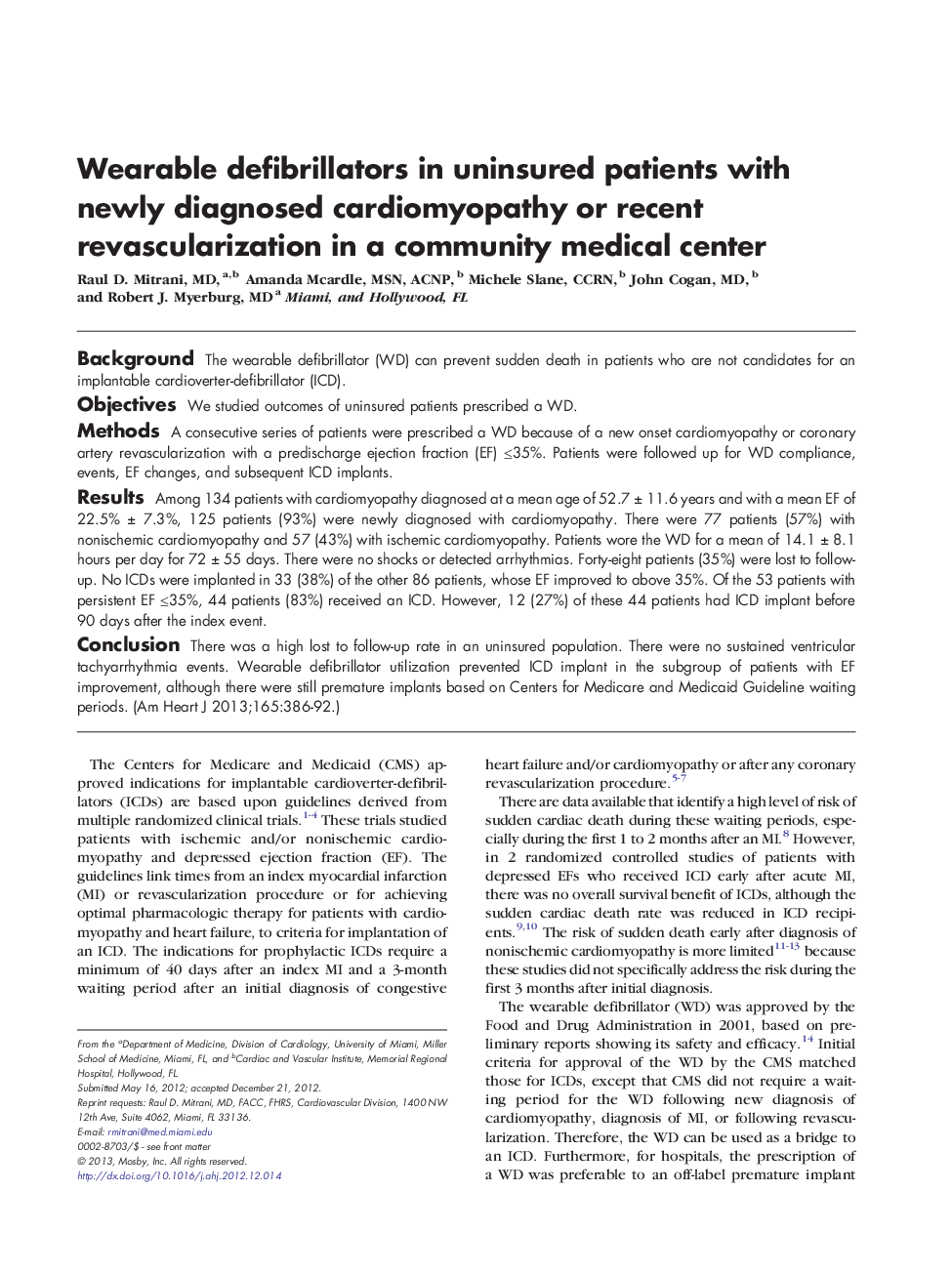| Article ID | Journal | Published Year | Pages | File Type |
|---|---|---|---|---|
| 2849473 | American Heart Journal | 2013 | 7 Pages |
BackgroundThe wearable defibrillator (WD) can prevent sudden death in patients who are not candidates for an implantable cardioverter-defibrillator (ICD).ObjectivesWe studied outcomes of uninsured patients prescribed a WD.MethodsA consecutive series of patients were prescribed a WD because of a new onset cardiomyopathy or coronary artery revascularization with a predischarge ejection fraction (EF) ≤35%. Patients were followed up for WD compliance, events, EF changes, and subsequent ICD implants.ResultsAmong 134 patients with cardiomyopathy diagnosed at a mean age of 52.7 ± 11.6 years and with a mean EF of 22.5% ± 7.3%, 125 patients (93%) were newly diagnosed with cardiomyopathy. There were 77 patients (57%) with nonischemic cardiomyopathy and 57 (43%) with ischemic cardiomyopathy. Patients wore the WD for a mean of 14.1 ± 8.1 hours per day for 72 ± 55 days. There were no shocks or detected arrhythmias. Forty-eight patients (35%) were lost to follow-up. No ICDs were implanted in 33 (38%) of the other 86 patients, whose EF improved to above 35%. Of the 53 patients with persistent EF ≤35%, 44 patients (83%) received an ICD. However, 12 (27%) of these 44 patients had ICD implant before 90 days after the index event.ConclusionThere was a high lost to follow-up rate in an uninsured population. There were no sustained ventricular tachyarrhythmia events. Wearable defibrillator utilization prevented ICD implant in the subgroup of patients with EF improvement, although there were still premature implants based on Centers for Medicare and Medicaid Guideline waiting periods.
